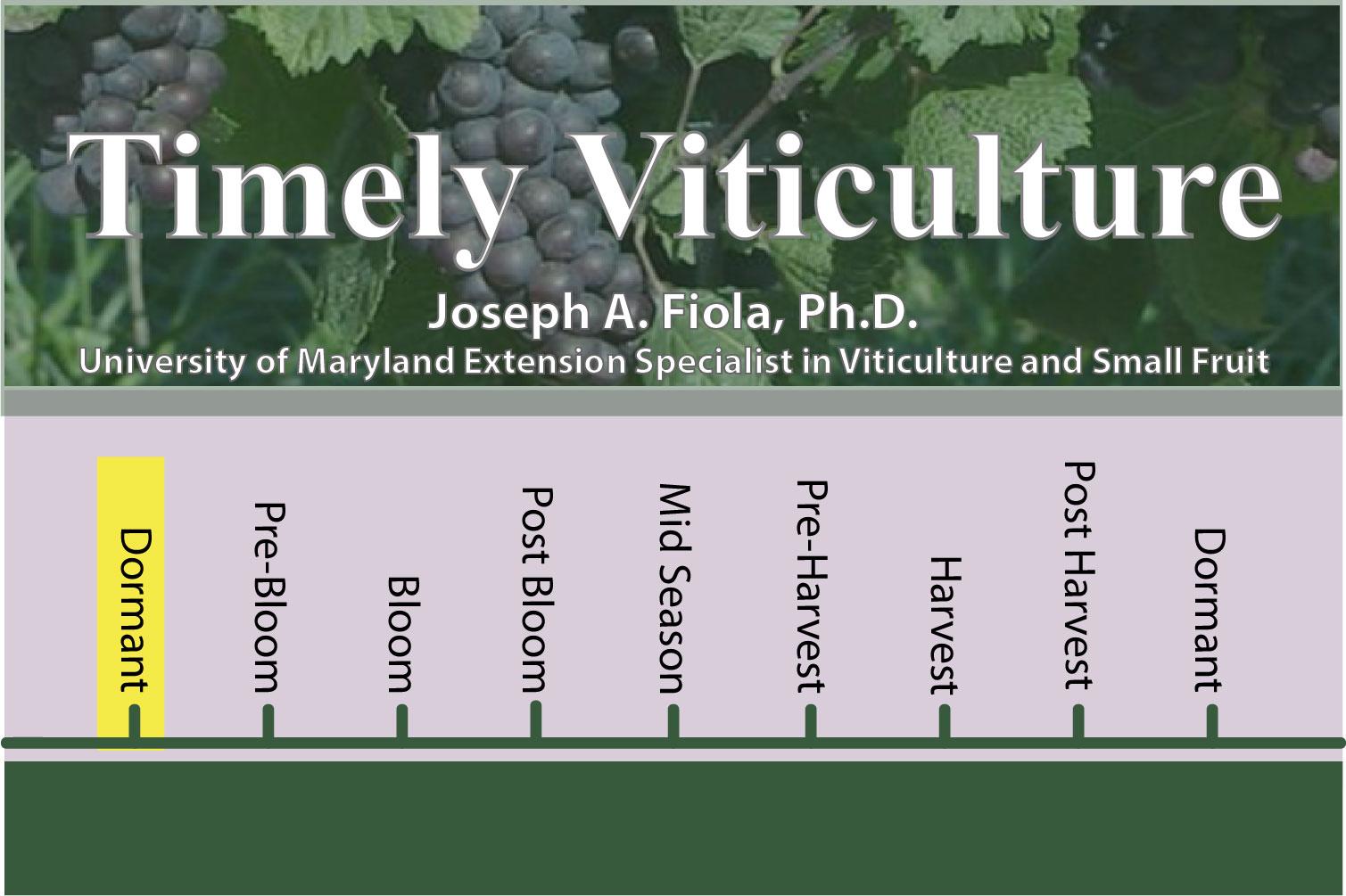Final Pruning, Pre-emergence Herbicides, and Planting New Vines
Final Pruning
Most have finished or already finished pruning. Remember, if you have a site where there is a history or severe risk of bud damage from late frosts with early budding varieties (such as ‘Chardonnay’), it is best to prune those last as this will help to delay bud break. You can also prune to long spurs (5-6 buds) or long canes initially to take advantage of apical dominance and then do a quick final pruning down to your final spur bud count when the risk of frost has passed. Remember to assess bud damage and include this info when you are making your decisions on bud counts. I have attached additional information from Kevin Kerr regarding assessing bud damage and compensating.
Pre-emergence Herbicides
Growers who use pre-emergence herbicides typically apply herbicides to the vine row in established vineyards twice annually, in late fall and in late spring. Herbicides applied in November control winter annuals, certain perennials, and early-season summer annuals. Spring herbicide applications extend summer annual weed control through harvest. Follow-up spring applications should include a different residual broadleaf weed herbicide and a residual grass herbicide. Add a post-emergence herbicide only if needed. Remember to check the label of the specific herbicide as to the timing based on the date, soil temperature, and/or grape bud development. If the timing is not correct they may be ineffective or possibly even cause damage to the vine.
Some considerations for planting new vines
Plant handling
When vines arrive from the nursery they must not be allowed to dry out and should be kept as cool as possible. It is best to have them delivered as close to the time of planting as possible unless there is access to dependable cold storage. The sooner they can be planted in the permanent location, the better the chance for survival. Early through late April is the recommended planting time as you move from the warmer eastern and southern shores to the western part of Maryland. Planting. All dead or injured roots should be removed and extra-long roots shortened if necessary for convenience in planting. Vines on their own roots may be planted about one inch deeper than they stood in the nursery. Grafted vines should have the graft union 2-4 inches above the ground level; REMEMBER TO ALLOW FOR SETTLING IN THE PLANTING HOLE, ESPECIALLY IF THE HOLES WERE AUGERED. Initially, the graft union can be covered with loose soil to prevent drying out, and then the soil should be removed after about two months or when growth begins. Be sure the plants receive adequate moisture through the establishment season. After planting, only dead wood should be pruned away. After growth begins, American and French Hybrid types are pruned back to one to two actively growing buds. At least two buds are left on vinifera vines since they will be trained to a multiple trunk system. The strongest shoots are trained upward on a stake driven beside the plant.
The young plants should not be allowed to trail on the ground during the first summer since cultivation and spraying will be difficult and the vines will not reach bearing age as quickly as when staked. The pros and cons of grow tubes will be discussed in the next issue.
